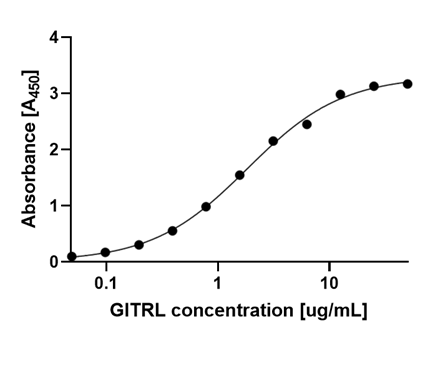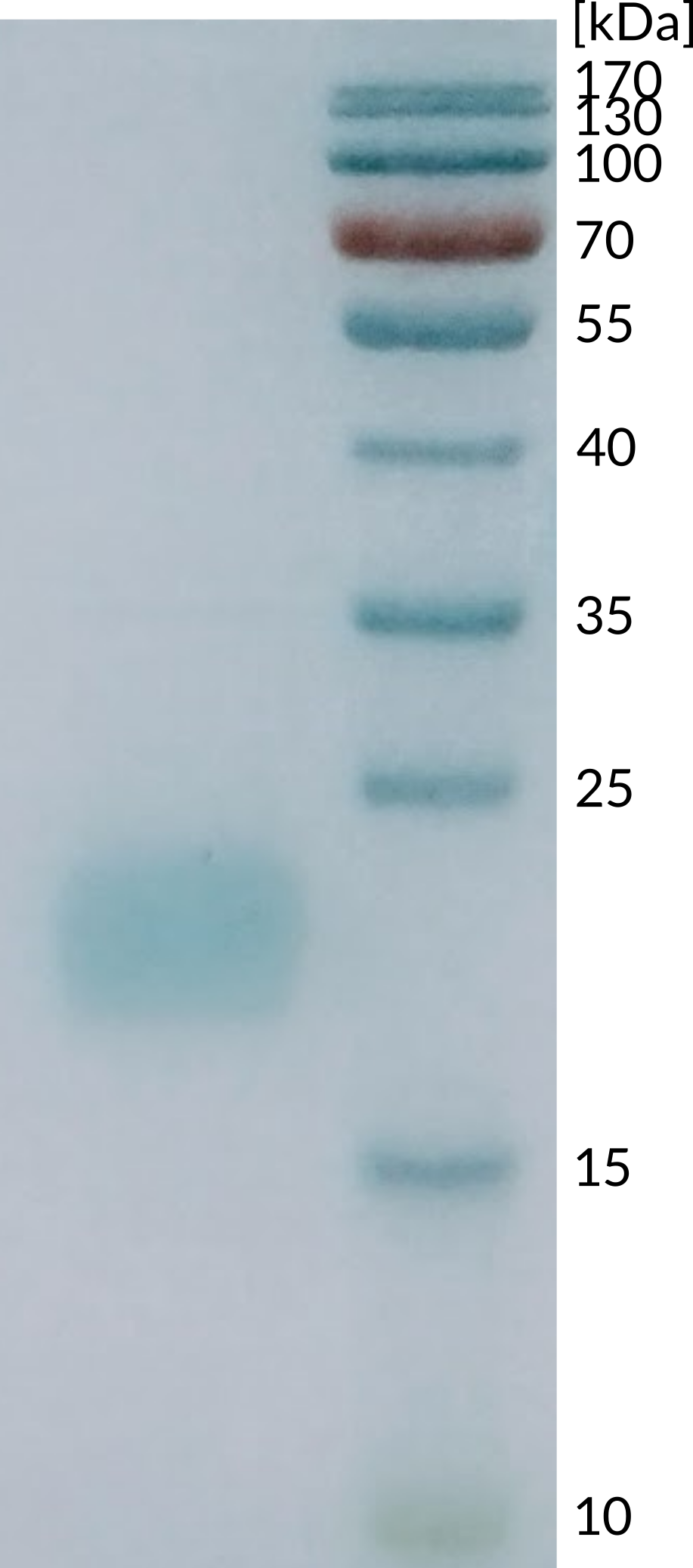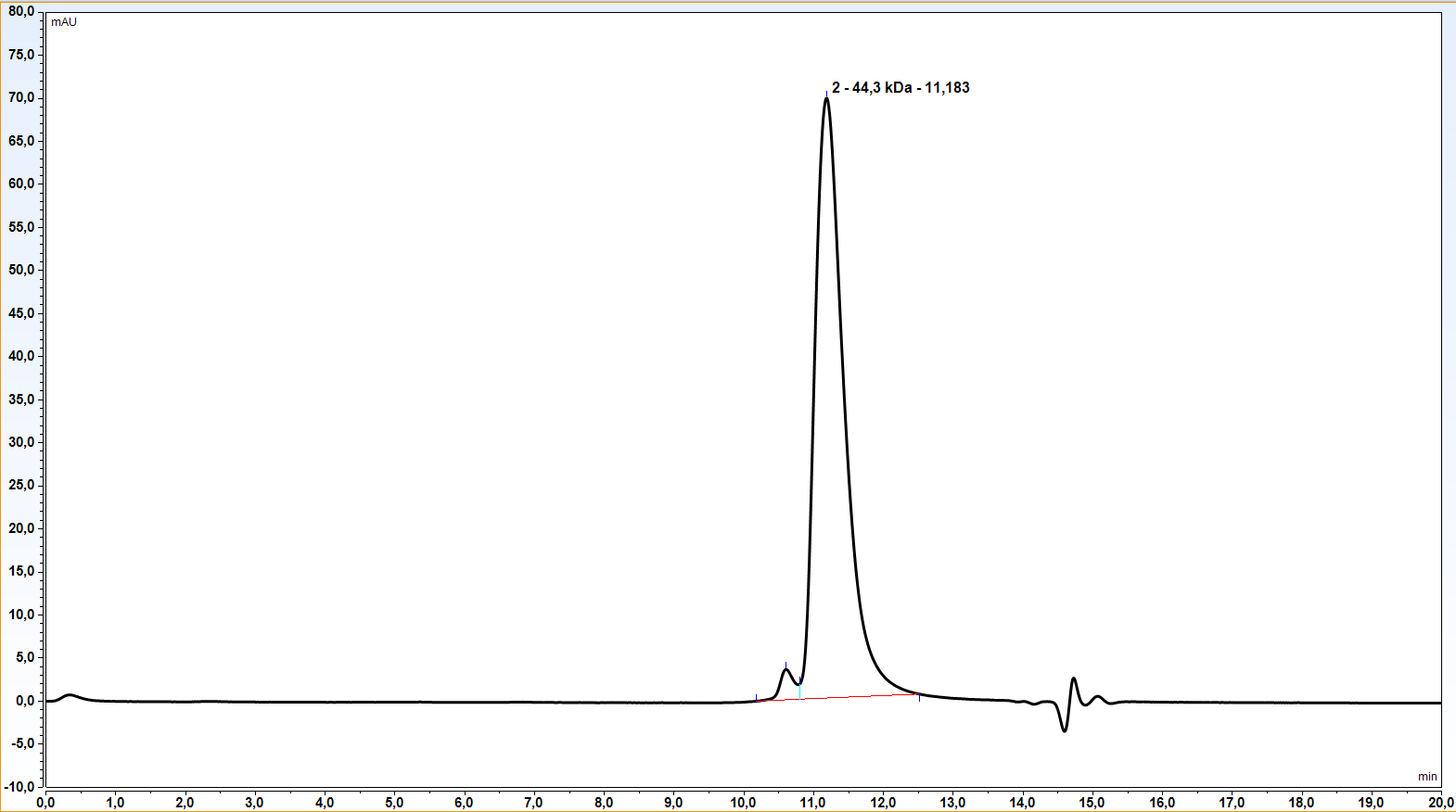| Alternative names | CD357 |
| Known ligands | GITRL |
| Origin | Homo sapiens |
| Accession number | Q9Y5U5 |




| Catalog number | Protein construct | Tag | Expression host | Biologically active | Application |
|---|---|---|---|---|---|
| R1-029-1 | GITR ECD (26-161) | Fc-tag | CHO | Yes | ELISA, WB, functional studies |
| R1-029-1a | GITR ECD (26-161) | Tag free | CHO | Yes | ELISA, WB, functional studies |
| R1-029-2 | GITR ECD Monomer | Fc-tag | CHO | TBD | TBD |
| R1-029-2a | GITR ECD Monomer | Tag free | CHO | TBD | TBD |
GITR is a TNFR homolog, which is expressed as a homodimer (1) and shows type 1 transmembrane topology. It contains three cysteine-rich domains (2). Its most notable binding partner is GITRL (Tumor necrosis factor ligand superfamily member 18). Stimulating GITR with specific agonist antibody leads to abrogation of suppressive activity of Treg (CD4+CD25+) cells (1, 3), which leads to conclusion that GITR-GITRL signaling pathway is co-stimulatory. Stimulating this pathway may be beneficial in treatment of malignancies and infectious diseases, whereas opposite effect would be expected for autoimmune and inflammatory diseases (4). Stimulation of effector T-cells proliferation as a result of GITR-GITRL binding have also been observed (5). Most abundant expression of GITR is exhibited on immune cells (peripheral blood leukocytes, bone marrow spleen, thymus), lung and brain cells. Peripheral blood leukocytes GITR expression level is notably increased after induction (2). Most recent studies show significant levels of GITR expression in non-small cell lung cancer, renal cell carcinoma and melanoma Treg cells (6) as well as expression directly on carcinoma cells incl. epithelial cell malignancies, such as bladder cancer and melanoma (7).
- Shimizu, Jun, et al. “Stimulation of CD25+ CD4+ regulatory T cells through GITR breaks immunological self-tolerance.” Nature immunology 3.2 (2002): 135-142.
- Gurney, A. L., et al. “Identification of a new member of the tumor necrosis factor family and its receptor, a human ortholog of mouse GITR.” Current biology 9.4 (1999): 215-218.
- McHugh, Rebecca S., et al. “CD4+ CD25+ immunoregulatory T cells: gene expression analysis reveals a functional role for the glucocorticoid-induced TNF receptor.” Immunity 16.2 (2002): 311-323.
- Clouthier, Derek L., and Tania H. Watts. “Cell-specific and context-dependent effects of GITR in cancer, autoimmunity, and infection.” Cytokine & growth factor reviews 25.2 (2014): 91-106.
- Ronchetti, Simona, et al. “Frontline: GITR, a member of the TNF receptor superfamily, is costimulatory to mouse T lymphocyte subpopulations.” European journal of immunology 34.3 (2004): 613-622.
- Vence, Luis, et al. “Characterization and comparison of GITR expression in solid tumors.” Clinical Cancer Research 25.21 (2019): 6501-6510.
- Zhu, Mayanne MT, et al. “Evaluation of glucocorticoid-induced TNF receptor (GITR) expression in breast cancer and across multiple tumor types.” Modern Pathology 33.9 (2020): 1753-1763.
